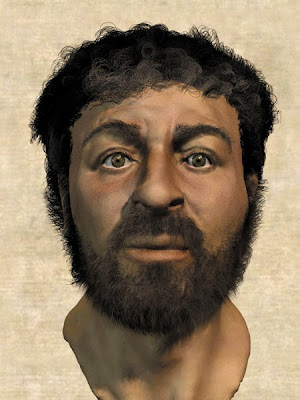The Real Image Of Jesus
No one knows exactly, however the region, climate and other factual information about the people can give us some good clues about what Jesus looked like in general. The images used in Christianity are images of an artist and how they want Jesus to look. The image below used a more scientific approach as explained in this article. “he [Jesus] is most often depicted as being taller than his disciples, lean, with long, flowing, light brown hair, fair skin and light-colored eyes. Familiar though this image may be, it is inherently flawed. A person with these features and physical bearing would have looked very different from everyone else in the region where Jesus lived and ministered. ” “”...in other parts of the world he [Jesus] is often shown as black, Arab or Hispanic." For those accustomed to traditional Sunday school portraits of Jesus, the sculpture of the dark and swarthy Middle Eastern man that emerges from Neave's laboratory is a reminder of the roots of their faith. "The fact that he probably looked a great deal more like a darker-skinned Semite than westerners are used to seeing him pictured is a reminder of his universality," says Charles D. Hackett, director of Episcopal studies at the Candler School of Theology in Atlanta. "And [it is] a reminder of our tendency to sinfully appropriate him in the service of our cultural values."One Artist's Painting Is Just As Valid As Another's
If Africans are going to trust and rely on an artist version of Jesus, Africans might as well paint Jesus the way he is more likely to look based on all information available, i.e., beyond Holy Books.First image taken from The Real Face Of Jesus Second two images taken from The Changing Face Of Jesus See also the article at ”Images Of Jesus Have Varied A Great Deal.”See also "religion" this blog.


